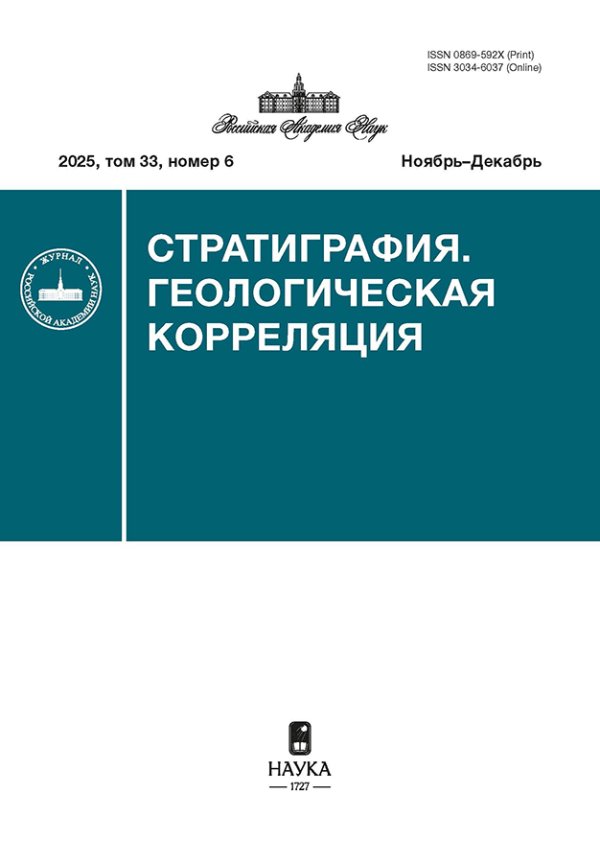Stratigraphy and Geological Correlation
Media registration certificate: ПИ № ФС 77 - 80521 от 23.03.2021
"Stratigraphy and Geological Correlation" is the only journal that provides comprehensive coverage of the fundamental and applied aspects of stratigraphy and the correlation of geological events and processes in time and space. Articles are based on the results of multidisciplinary studies and are for the researchers, university professors, students, and geologists interested in stratigraphy and the chronological features of the word's geological record.
The journal is peer-reviewed and is included in the List of the Higher Attestation Commission for the publication of works by applicants for academic degrees. Since 2010, it has been part of the RSCI system.
The magazine was founded in 1993.
Editor-in-Chief
Rogov, Mikhail A. , Dr. Sci. (Geol.–Min.), Geological Institute, RAS, Moscow
Current Issue
Vol 33, No 6 (2025)
Revision of the Zonal Brachiopod Species Jakutoproductus protoverkhoyanicus Kashirtsev from the Carboniferous-Permian Boundary Deposits of Verkhoyanie, North-Eastern Russia
Abstract
 3-33
3-33


Early Cretaceous Belemnites of the Anabar Region (Northern East Siberia): Taxonomic Composition, Paleoecology and Biodiversity
Abstract
 34-62
34-62


New Data on Diatoms and Silicoflagellates of the Late Cretaceous of the Ust'-Manya Section, Severnaya Sos'va River, Subpolar Trans-Urals
Abstract
 63-74
63-74


Biostratigraphy of the Campanian–Maastrichtian Boundary Deposits of the Eastern Part of the European Palaeobiogeographic Province (Section Lesnaya Respublika) by Microfauna
Abstract
 75-102
75-102


Influence of Climate Change on Sedimentation Processes of the Spitsbergen Archipelago in the Late Holocene (on the Example of the Little Ice Age and Modern Warming)
Abstract
 103-120
103-120


Discussions
Some Aspects of the Study of the Geology of Wrangel Island (Commentary to the Article by M.I. Tuchkova and Co-Authors "New Data on the Late Paleozoic Conglomerates of Wrangel Island and Their Geological Interpretation")
Abstract
 121-128
121-128












